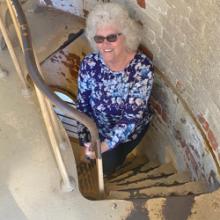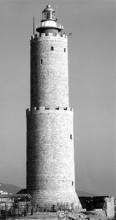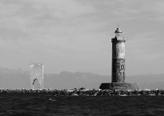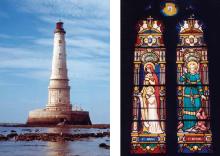Point No Point Lighthouse
Point No Point Lighthouse has served mariners diligently since January 1880. Though small in stature as lighthouses go, it looms large in our nation’s history and bears the significant responsibility and noteworthy honor of welcoming ships to Puget Sound.
- Read more about Point No Point Lighthouse
- Log in to post comments
Carl Harleman
Swedish architect and lighthouse builder
William Franklin Raynolds
Lighthouse Engineer East Coast USA

The Lighthouse of La Coruna - Spain
Each lighthouse has its own story, but there is one in particular, the Tower of Hercules at La Coruña in the region of Galicia on the northwestern coast of Spain, which owes its name to one of the most intriguing stories ever told.
- Read more about The Lighthouse of La Coruna - Spain
- Log in to post comments
The Lighthouse of Livorno - Tuscany
The Middle Ages are usually referred to as a dark period in history, but that it is not completely true. In those centuries the arts started to flourish, which led to the era of the Renaissance. Painting, poetry, architecture, and the beautiful Gothic cathedrals are examples of this era. Also, many lighthouses were erected along the coasts of Italy in the same era.
- Read more about The Lighthouse of Livorno - Tuscany
- Log in to post comments
La Lanterna - Genoa, Italy
The origins of the lighthouse of Genoa are uncertain and half legendary, but some sources say the first tower was built around 1129 on a rock called Capo di Faro (Lighthouse Cape). By a decree called delle prestazioni (about services), responsibility for the light was entrusted to the surrounding inhabitants “Habent facere guardiam ad turrem capiti fari” which, in Latin, simply means “to keep the light on.”
- Read more about La Lanterna - Genoa, Italy
- Log in to post comments
The Lighthouses of the North Coast of Tuscany, Italy
In 1861 Italy was finally unified and Tuscany became part of the Kingdom of Italy, ruled by King Emanuele II of Savoia. In 1863 the situation of the harbor-channel of Viareggio became of primary relevance again. There was still the problem of the sand shoals always moving; a sea storm was enough to close the entrance of the channel and of the harbor.
La Cordouan Lighthouse
The most beautiful lighthouse in the world.
“The Gulf of Gascony, from Cordouan to Biarritz, is a sea of contradictions; an enigma of a strife and struggle. As it stretches southward it suddenly acquires an extraordinary depth and becomes an abyss in which the waters are swallowed up. An ingenious naturalist has compared it to a gigantic funnel, which abruptly absorbs all that pours into it. The flood, escaping from it under an awful pressure, [mounts] to a height of which our seas afford no other example.” — Jules Michelet; French historian (1798 -1874)
- Read more about La Cordouan Lighthouse
- Log in to post comments






